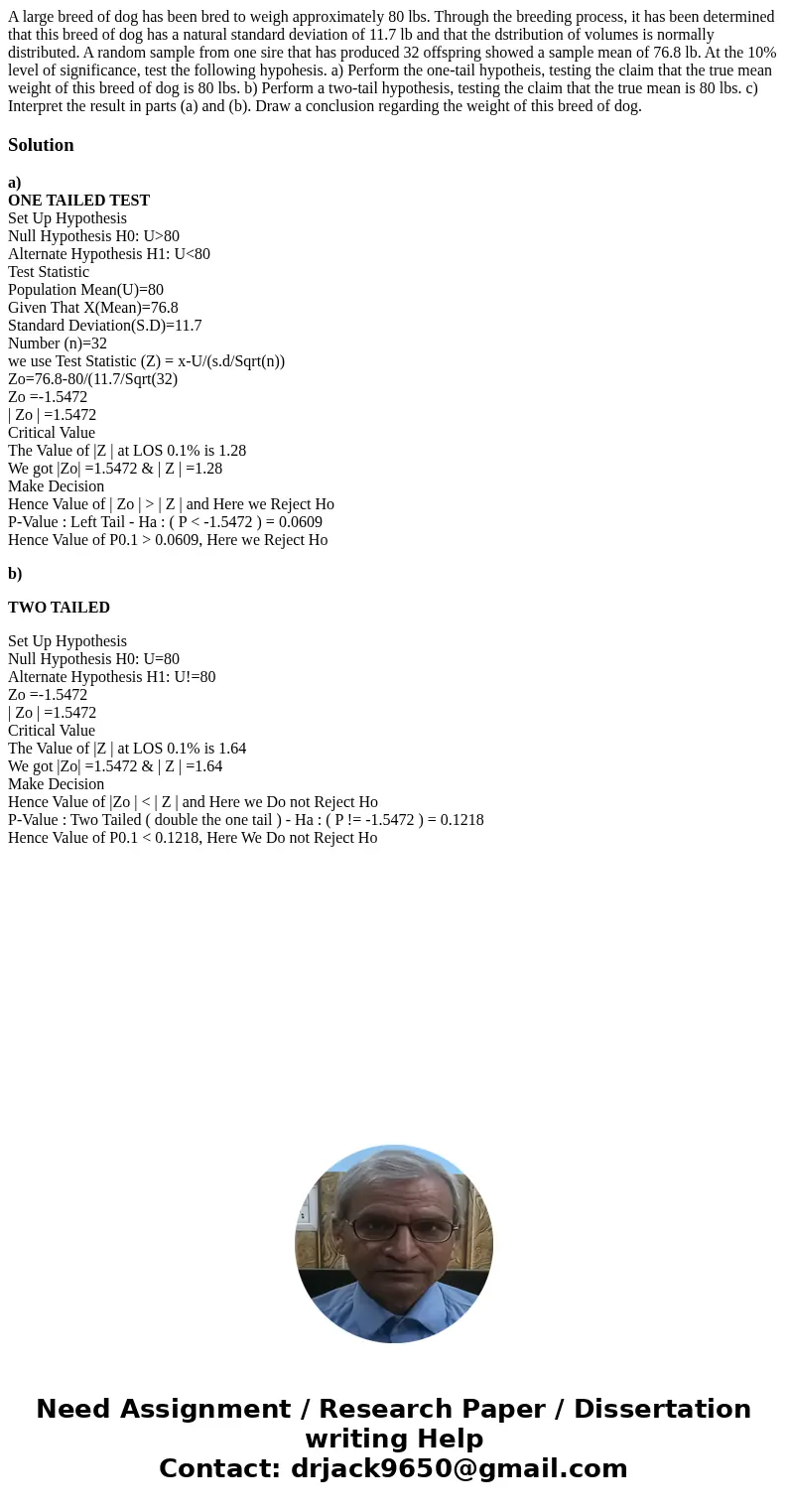A large breed of dog has been bred to weigh approximately 80
A large breed of dog has been bred to weigh approximately 80 lbs. Through the breeding process, it has been determined that this breed of dog has a natural standard deviation of 11.7 lb and that the dstribution of volumes is normally distributed. A random sample from one sire that has produced 32 offspring showed a sample mean of 76.8 lb. At the 10% level of significance, test the following hypohesis. a) Perform the one-tail hypotheis, testing the claim that the true mean weight of this breed of dog is 80 lbs. b) Perform a two-tail hypothesis, testing the claim that the true mean is 80 lbs. c) Interpret the result in parts (a) and (b). Draw a conclusion regarding the weight of this breed of dog.
Solution
a)
ONE TAILED TEST
Set Up Hypothesis
Null Hypothesis H0: U>80
Alternate Hypothesis H1: U<80
Test Statistic
Population Mean(U)=80
Given That X(Mean)=76.8
Standard Deviation(S.D)=11.7
Number (n)=32
we use Test Statistic (Z) = x-U/(s.d/Sqrt(n))
Zo=76.8-80/(11.7/Sqrt(32)
Zo =-1.5472
| Zo | =1.5472
Critical Value
The Value of |Z | at LOS 0.1% is 1.28
We got |Zo| =1.5472 & | Z | =1.28
Make Decision
Hence Value of | Zo | > | Z | and Here we Reject Ho
P-Value : Left Tail - Ha : ( P < -1.5472 ) = 0.0609
Hence Value of P0.1 > 0.0609, Here we Reject Ho
b)
TWO TAILED
Set Up Hypothesis
Null Hypothesis H0: U=80
Alternate Hypothesis H1: U!=80
Zo =-1.5472
| Zo | =1.5472
Critical Value
The Value of |Z | at LOS 0.1% is 1.64
We got |Zo| =1.5472 & | Z | =1.64
Make Decision
Hence Value of |Zo | < | Z | and Here we Do not Reject Ho
P-Value : Two Tailed ( double the one tail ) - Ha : ( P != -1.5472 ) = 0.1218
Hence Value of P0.1 < 0.1218, Here We Do not Reject Ho

 Homework Sourse
Homework Sourse